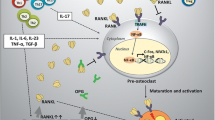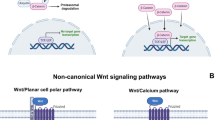Abstract
Bisphosphonate-associated osteonecrosis of the jaws (BP-ONJ) is a side effect primarily in patients receiving highly potent nitrogen-containing bisphosphonates. The exact etiopathology is unknown. In addition to reduced bone remodeling, there may also be an impact on soft tissues. The impact of nitrogen- (ibandronate, pamidronate, zoledronate) and non-nitrogen-containing bisphosphonates (clodronate) on human umbilicord vein endothelial cells (HUVEC), fibroblasts and osteogenic cells was analyzed employing cell viability testing and a scratch wound assay. The impact on the cell morphology of vital-stained osteogenic cells was investigated by cell visualization (confocal laser scanning microscopy). Pamidronate and zoledronate had the greatest negative impact on all cell lines, whereas the impact of ibandronate and clodronate was less distinct. The effect of clodronate on HUVEC and fibroblasts was particularly marginal. BP-ONJ could be a multifactorial event with multicellular impairments. This might result in altered wound healing. The increased impact of the highly potent bisphosphonates, particularly on non-bone cells, may explain the higher occurrence of BP-ONJ.



Similar content being viewed by others
References
Diel IJ, Bergner R, Grotz KA (2007) Adverse effects of bisphosphonates: current issues. J Support Oncol 5(10):475–482
Marx RE (2003) Pamidronate (Aredia) and zoledronate (Zometa) induced avascular necrosis of jaws: a growing epidemic. J Oral Maxillofac Surg 61(9):1115–1117
Walter C, Grotz KA, Kunkel M et al (2007) Prevalence of bisphosphonate associated osteonecrosis of the jaw within the field of osteonecrosis. Support Care Cancer 15(2):197–202
Advisory Task Force on Bisphosphonate-Related Ostenonecrosis of the Jaws AAoOaMS (2007) American Association of Oral and Maxillofacial Surgeons position paper on bisphosphonate-related osteonecrosis of the jaws. J Oral Maxillofac Surg 65(3):369–376
Hoff AO, Toth BB, Altundag K et al (2008) Frequency and risk factors associated with osteonecrosis of the jaw in cancer patients treated with intravenous bisphosphonates. J Bone Miner Res 23(6):826–836
Aguiar Bujanda D, Bohn Sarmiento U, Cabrera Suarez MA et al (2007) Assessment of renal toxicity and osteonecrosis of the jaws in patients receiving zoledronic acid for bone metastasis. Ann Oncol 18(3):556–560
Boonyapakorn T, Schirmer I, Reichart PA et al (2008) Bisphosphonate-induced osteonecrosis of the jaws: prospective study of 80 patients with multiple myeloma and other malignancies. Oral Oncol 44(9):857–869
Wang EP, Kaban LB, Strewler GJ et al (2007) Incidence of osteonecrosis of the jaw in patients with multiple myeloma and breast or prostate cancer on intravenous bisphosphonate therapy. J Oral Maxillofac Surg 65(7):1328–1331
Walter C, Al-Nawas B, Grotz KA et al (2008) Prevalence and risk factors of bisphosphonate-associated osteonecrosis of the jaw in prostate cancer patients with advanced disease treated with zoledronate. Eur Urol 54(5):1066–1072
Rizzoli R, Burlet N, Cahall D et al (2008) Osteonecrosis of the jaw and bisphosphonate treatment for osteoporosis. Bone 42(5):841–847
Walter C, Al-Nawas B, Wagner W (2008) Implantology as a reason for bisphosphonate-associated-osteonecrosis of the jaws (BP-ONJ). Clin Oral Implants Res 19(9):850
Mashiba T, Mori S, Burr DB et al (2005) The effects of suppressed bone remodeling by bisphosphonates on microdamage accumulation and degree of mineralization in the cortical bone of dog rib. J Bone Miner Metab 23(Suppl):36–42
Santini D, Vincenzi B, Avvisati G et al (2002) Pamidronate induces modifications of circulating angiogenetic factors in cancer patients. Clin Cancer Res 8(5):1080–1084
Allegra A, Oteri G, Nastro E et al (2007) Patients with bisphosphonates-associated osteonecrosis of the jaw have reduced circulating endothelial cells. Hematol Oncol 25(4):164–169
Ziebart T, Yoon CH, Trepels T et al (2008) Sustained persistence of transplanted proangiogenic cells contributes to neovascularization and cardiac function after ischemia. Circ Res 103(11):1327–1334
Landesberg R, Cozin M, Cremers S et al (2008) Inhibition of oral mucosal cell wound healing by bisphosphonates. J Oral Maxillofac Surg 66(5):839–847
Mosmann T (1983) Rapid colorimetric assay for cellular growth and survival: application to proliferation and cytotoxicity assays. J Immunol Methods 65(1–2):55–63
Kim HJ, Kim SH, Kim MS et al (2005) Varying Ti-6Al-4V surface roughness induces different early morphologic and molecular responses in MG63 osteoblast-like cells. J Biomed Mater Res A 74(3):366–373
Park BS, Heo SJ, Kim CS et al (2005) Effects of adhesion molecules on the behavior of osteoblast-like cells and normal human fibroblasts on different titanium surfaces. J Biomed Mater Res A 74(4):640–651
Klein MO, Tapety F, Sandhöfer F et al (2006) Visualization of vital osteogenic cells on differently treated titanium surfaces using confocal laser scanning microscopy (CLSM)—a pilot study. Z Zahnärztl Implantol 21(4):145–153
Mashiba T, Hirano T, Turner CH et al (2000) Suppressed bone turnover by bisphosphonates increases microdamage accumulation and reduces some biomechanical properties in dog rib. J Bone Miner Res 15(4):613–620
Rogers MJ, Watts DJ, Russell RG (1997) Overview of bisphosphonates. Cancer 80(8 Suppl):1652–1660
Marx RE, Sawatari Y, Fortin M et al (2005) Bisphosphonate-induced exposed bone (osteonecrosis/osteopetrosis) of the jaws: risk factors, recognition, prevention, and treatment. J Oral Maxillofac Surg 63(11):1567–1575
Reszka AA, Halasy-Nagy J, Rodan GA (2001) Nitrogen-bisphosphonates block retinoblastoma phosphorylation and cell growth by inhibiting the cholesterol biosynthetic pathway in a keratinocyte model for esophageal irritation. Mol Pharmacol 59(2):193–202
Reid IR, Bolland MJ, Grey AB (2007) Is bisphosphonate-associated osteonecrosis of the jaw caused by soft tissue toxicity? Bone 41(3):318–320
Fleisch H (2003) Bisphosphonates in osteoporosis. Eur Spine J 12(Suppl 2):S142–S146
Rogers MJ, Gordon S, Benford HL et al (2000) Cellular and molecular mechanisms of action of bisphosphonates. Cancer 88(12 Suppl):2961–2978
Huja SS, Fernandez SA, Hill KJ et al (2006) Remodeling dynamics in the alveolar process in skeletally mature dogs. Anat Rec A Discov Mol Cell Evol Biol 288(12):1243–1249
Ruggiero SL, Mehrotra B, Rosenberg TJ et al (2004) Osteonecrosis of the jaws associated with the use of bisphosphonates: a review of 63 cases. J Oral Maxillofac Surg 62(5):527–534
Marx RE, Cillo JE Jr, Ulloa JJ (2007) Oral bisphosphonate-induced osteonecrosis: risk factors, prediction of risk using serum CTX testing, prevention, and treatment. J Oral Maxillofac Surg 65(12):2397–2410
Montazeri AH, Erskine JG, McQuaker IG (2007) Oral sodium clodronate induced osteonecrosis of the jaw in a patient with myeloma. Eur J Haematol 79(1):69–71
Acknowledgment
The authors thank Johanna Adler for CLSM image acquisition.
Conflict of interest
None.
Author information
Authors and Affiliations
Corresponding author
Rights and permissions
About this article
Cite this article
Walter, C., Klein, M.O., Pabst, A. et al. Influence of bisphosphonates on endothelial cells, fibroblasts, and osteogenic cells. Clin Oral Invest 14, 35–41 (2010). https://doi.org/10.1007/s00784-009-0266-4
Received:
Accepted:
Published:
Issue Date:
DOI: https://doi.org/10.1007/s00784-009-0266-4




